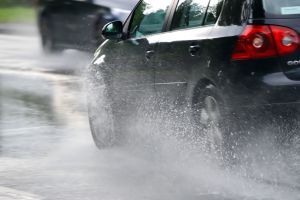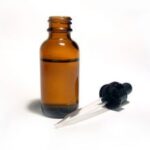When it comes to choosing a brake fluid, which is the best? Considering there are many different types of brake fluid and each vehicle has specific needs the decision on what to use can be difficult. If you understand the difference between the types of brake fluid the entire process will be a whole lot easier. Brake fluid is an essential part of all vehicle braking systems and must be able to withstand repeated use. When doing routine maintenance you should change the brake fluid to ensure the best performance and safety. Learn some of the basics of brake fluid.
The United States Department of Transportation regulates brake fluids and assigns them according to a numbered system. Each brand of brake fluid sold in the US is marked DOT -2, 3, 4, or 5. DOT-2 brake fluid is the cheapest, lowest quality brake fluid on the market and should not be used in passenger cars. Although DOT-2 can be used it is going to break down very quickly and may cause braking problems because it’s essentially Castor oil. Most passenger vehicles use DOT-3 or DOT-4. DOT-5 is generally used in trucks and for silicone based braking systems. DOT-3 brake fluid meets the minimum requirements set forth for by the US Department of Transportation.
All levels of brake fluid are compromised of different elements that produce separate results from one another. DOT-3 and DOT-4 are generally glycol based brake fluids. Glycol based brake fluids can absorb water so you will need to change your brake fluid at least once a year. Brake fluid needs to have a high boiling point and should be able to withstand repeated use. Any brake fluid you choose should be free of contaminants, resistant to freezing, and able to stand up to severe conditions like braking downhill. Because DOT-3 brake fluid only meets minimum requirements if you are driving a SUV, truck, or specialty vehicle you may want to consider using a DOT-4 brake fluid. DOT-3 and DOT-4 can be used in most passenger vehicles.
It is recommended to change your brake fluid at least once a year but changing it more often will increase performance of your braking system, as well as prolong the life of your parts. With DOT-3 and DOT-4 brake fluids, over time water condenses in the system forming pockets that can be corrosive to parts. As more water enters the brake fluid, the boiling point reduces and eventually cooks at high temperatures turning into gas. When this process takes place in your braking system you may end up with a squishy feeling pedal or no brakes at all. Unlike DOT-3 and DOT-4, DOT-5 brake fluid is more resistant to water and will last much longer.
Different types of brake fluid, even between 3 and 4 should not be mixed because the ingredients may react causing an explosion or fire. DOT-5 is mainly used in silicone based braking systems and should not be used in most passenger vehicles. Although DOT-5 can be used in some passenger vehicles, it may cause the system to malfunction because it cannot mix with water like DOT-3 or DOT-4.
DOT-5 is incompatible with all Anti-Lock braking systems. Read your owners manual or ask your mechanic what type of fluid is best for your car. Every car has different requirements for brake fluid. When choosing a brake fluid always choose a quality, name brand fluid. Off brands may be contaminated and are more likely to absorb water which leads to break down. When it comes to the performance of your car there is nothing more important than braking. Change your brake fluid and brake pads at least once a year, if not more to maintain system reliability and safety.




